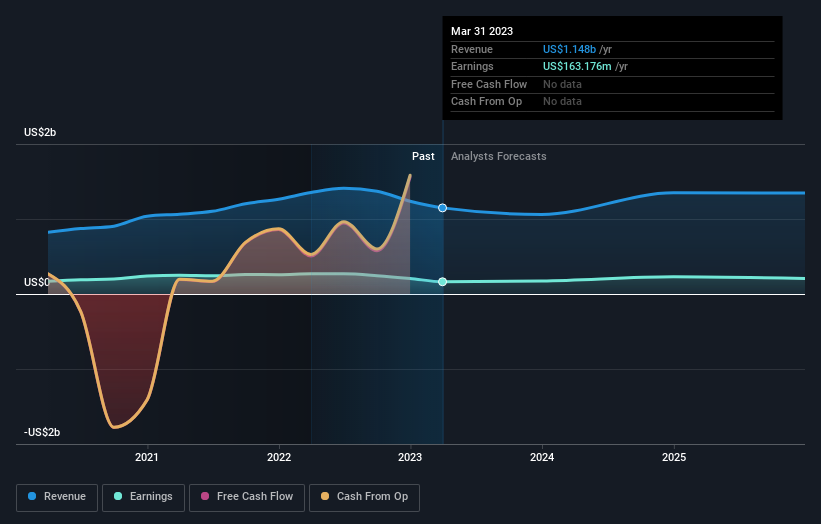- United States
- /
- Diversified Financial
- /
- NYSE:WD
Walker & Dunlop, Inc. (NYSE:WD) Analysts Are More Bearish Than They Used To Be

Today is shaping up negative for Walker & Dunlop, Inc. (NYSE:WD) shareholders, with the analysts delivering a substantial negative revision to this year's forecasts. Both revenue and earnings per share (EPS) estimates were cut sharply as analysts factored in the latest outlook for the business, concluding that they were too optimistic previously.
Following the latest downgrade, the four analysts covering Walker & Dunlop provided consensus estimates of US$1.1b revenue in 2023, which would reflect a noticeable 7.6% decline on its sales over the past 12 months. Per-share earnings are expected to increase 2.2% to US$5.00. Before this latest update, the analysts had been forecasting revenues of US$1.3b and earnings per share (EPS) of US$5.95 in 2023. Indeed, we can see that the analysts are a lot more bearish about Walker & Dunlop's prospects, administering a measurable cut to revenue estimates and slashing their EPS estimates to boot.
See our latest analysis for Walker & Dunlop

One way to get more context on these forecasts is to look at how they compare to both past performance, and how other companies in the same industry are performing. These estimates imply that sales are expected to slow, with a forecast annualised revenue decline of 10% by the end of 2023. This indicates a significant reduction from annual growth of 15% over the last five years. By contrast, our data suggests that other companies (with analyst coverage) in the same industry are forecast to see their revenue grow 9.1% annually for the foreseeable future. It's pretty clear that Walker & Dunlop's revenues are expected to perform substantially worse than the wider industry.
The Bottom Line
The most important thing to take away is that analysts cut their earnings per share estimates, expecting a clear decline in business conditions. Unfortunately analysts also downgraded their revenue estimates, and industry data suggests that Walker & Dunlop's revenues are expected to grow slower than the wider market. After a cut like that, investors could be forgiven for thinking analysts are a lot more bearish on Walker & Dunlop, and a few readers might choose to steer clear of the stock.
Worse, Walker & Dunlop is labouring under a substantial debt burden, which - if today's forecasts prove accurate - the forecast downgrade could potentially exacerbate. To see more of our financial analysis, you can click through to our free platform to learn more about its balance sheet and specific concerns we've identified.
You can also see our analysis of Walker & Dunlop's Board and CEO remuneration and experience, and whether company insiders have been buying stock.
Valuation is complex, but we're here to simplify it.
Discover if Walker & Dunlop might be undervalued or overvalued with our detailed analysis, featuring fair value estimates, potential risks, dividends, insider trades, and its financial condition.
Access Free AnalysisHave feedback on this article? Concerned about the content? Get in touch with us directly. Alternatively, email editorial-team (at) simplywallst.com.
This article by Simply Wall St is general in nature. We provide commentary based on historical data and analyst forecasts only using an unbiased methodology and our articles are not intended to be financial advice. It does not constitute a recommendation to buy or sell any stock, and does not take account of your objectives, or your financial situation. We aim to bring you long-term focused analysis driven by fundamental data. Note that our analysis may not factor in the latest price-sensitive company announcements or qualitative material. Simply Wall St has no position in any stocks mentioned.
About NYSE:WD
Walker & Dunlop
Through its subsidiaries, originates, sells, and services a range of multifamily and other commercial real estate financing products and services for owners and developers of real estate in the United States.
Reasonable growth potential with questionable track record.
Similar Companies
Market Insights
Community Narratives



